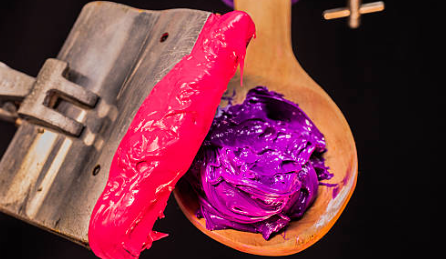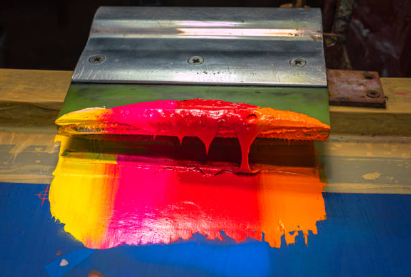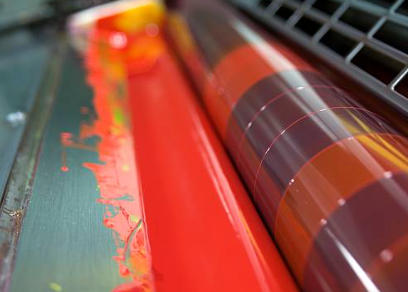Table of Contents
The Future of Plastisol Ink: New Ideas and Earth-Friendly Changes
Plastisol ink is a thick, sticky ink used to print bright designs on clothes like t-shirts, hats, and bags. It has been popular for years because it lasts long and does not fade easily. But now, people are worried about the chemicals and plastic waste it creates. This article explains how the ink industry is changing to make safer, cleaner choices for our planet.
Why Plastisol Ink’s Future Matters
Plastisol ink is loved by printers for three main reasons:
- Bright colors: Works well on dark fabrics.
- Durability: Stays on clothes even after many washes.
- Easy to use: Spreads smoothly on fabric.
But there’s a problem. Old plastisol inks use chemicals called phthalates and plastic materials like PVC that can harm people and the Earth. New rules and customer demands are pushing companies to find better solutions.
Problems with Old Plastisol Ink
Here’s why old plastisol inks are not good for the Earth:
1. Harmful Chemicals
- Phthalates: These chemicals help make ink flexible but can cause health problems.
- Example: California banned three phthalates in 2024. Companies that use them can be fined $2,500 per day.
2. Tiny Plastics in Water
- Microplastics: Tiny pieces of plastic wash off clothes into rivers and oceans.
- Fact: A 2023 study found that 12% of microplastics in textile wastewater come from plastisol ink.
3. Dirty Air from High Heat
- Energy waste: Old inks need high heat (320°F) to dry.
- Solution: Switching to low-temperature inks (250°F) saves 40% energy.
4. Ink Waste
- Landfills: Most used ink ends up in trash.
- Good news: Programs like TerraCycle recycled 1,200+ tons of ink waste in 2023.

New Ideas for Better Plastisol Ink
Companies are creating safer, cleaner inks. Here are the top innovations:
1. Safer Chemicals
- Phthalate-free plasticizers: Made from plants instead of chemicals.
- Example: BASF’s EcoFlex® is used by 200+ printers in Europe.
- Example: Dow’s Evoque™ uses 30% less PVC but stays sticky.
2. Low-Heat Drying Inks
- How it works: Dries at 250°F instead of 320°F.
- Benefits: Saves energy, cuts costs, and reduces air pollution.
3. Mixing with Earth-Friendly Inks
- Hybrid inks: Blend plastisol with water-based inks.
- Result: Less PVC and fewer chemicals.
- Fact: 35% of printers now use hybrids (2023 survey).
4. Digital Printing Machines
- How it works: Prints small batches with precision.
- Example: Kornit Digital machines use plastisol underbases + water-based colors.
- Benefit: Less wasted ink and energy.
5. Smart Inks for Future Clothes
- Graphene ink: Makes clothes conduct electricity (for smartwatches or health-tracking shirts).
- Self-destroying ink: Dissolves in recycling machines to make fabric reuse easier.

How Printers Can Use Plastisol Ink Safely
Follow these tips to protect the Earth:
1. Reduce Waste
- Recycle: Join TerraCycle’s program to keep ink out of landfills.
- Test first: Print a small sample to avoid mistakes.
2. Get Certifications
- Oeko-Tex: Ensures ink is safe for skin.
- Cradle to Cradle: Ensures ink is safe for the Earth.
- GOTS: For organic fabrics.
3. Upgrade Slowly
- Mix inks: Start with 50% old ink + 50% new eco-ink.
- New machines: Buy tools that work with low-heat inks.

What Will Happen by 2030?
Experts predict big changes:
1. More Eco-Friendly Inks
- The global plastisol ink market will grow 4.2% each year (Grand View Research).
- PVC-free inks will replace old formulas.
2. Stricter Rules
- The EU Green Deal may ban PVC in inks.
- More states will copy California’s phthalate bans.
3. Better Recycling
- Siegwerk’s project with H&M can recycle 90% of ink from clothes (2024 pilot).
4. Smart Clothes
- Graphene inks will let shirts monitor heart rates or charge phones.
Costs to Change
- Short-term: Eco-inks cost 15–20% more.
- Long-term: Save money by avoiding fines and keeping customers.
Conclusion: Make Printing Safe and Fun
Remember these steps:
- Switch to phthalate-free inks.
- Use low-heat inks to save energy.
- Recycle with programs.
Start small today! Check your inks, talk to suppliers, and try one new eco-idea each month. Together, we can keep prints bright and the Earth healthy!
Simple Words Guide:
- Phthalate-free plastisol: Ink without bad chemicals.
- Low-temperature curing ink: Dries with less heat.
- PVC-free screen printing: Ink without plastic.
- Sustainable plastisol alternatives: Earth-friendly inks.
By using these ideas, printers can keep making beautiful clothes without hurting the planet! 🌎✨









